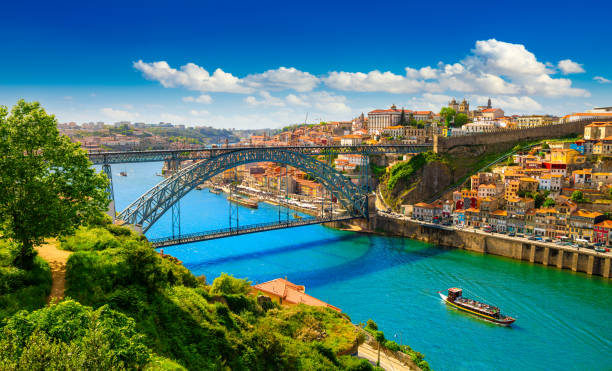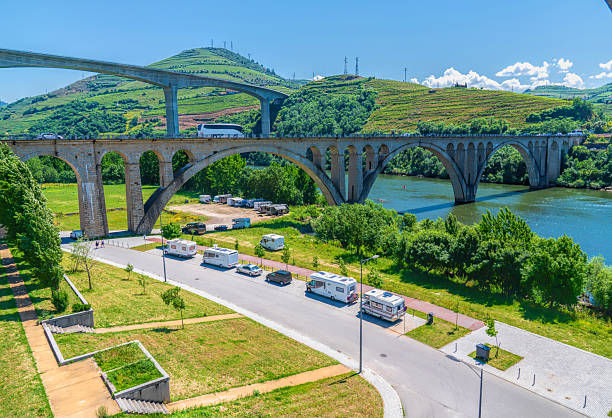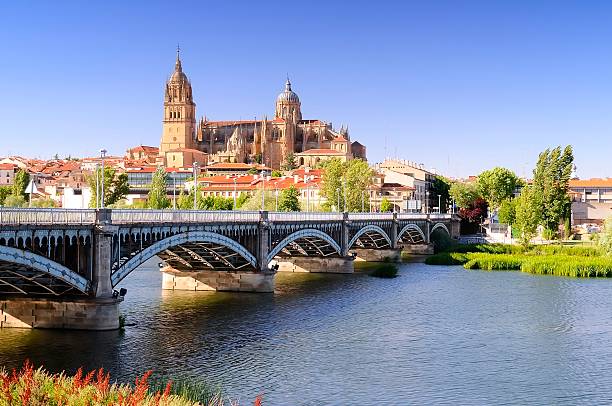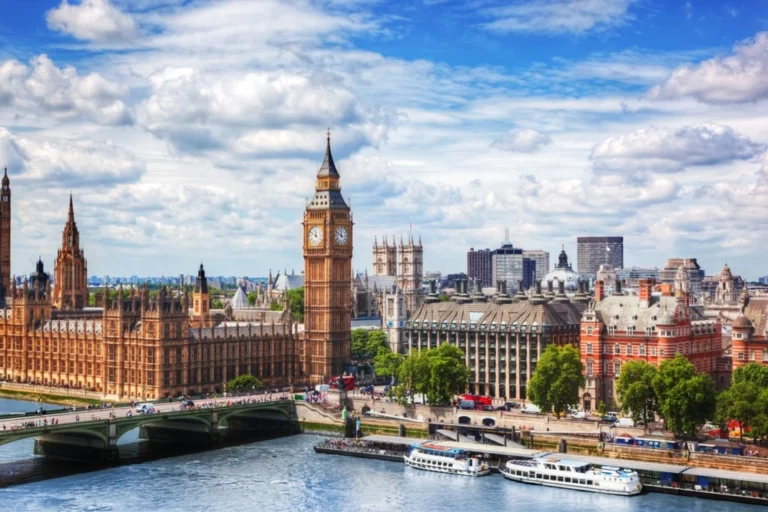The Ultimate Guide to a Douro River Cruise

If you’re dreaming of cobblestone streets, world-class wine, charming villages, and golden landscapes that look like they leapt out of a painting—welcome to the Douro River.
Winding its way through Northern Portugal and into Spain, the Douro River is one of Europe’s most underrated gems. While cruises on the Danube and Rhine get all the buzz, the Douro is quietly—and rapidly—becoming a favorite among travelers who crave a more intimate, cultural, and wine-centric experience.
This guide is here to give you the full picture: from what a Douro River cruise actually involves, to tips on when to go, what you’ll see, how much it costs, and whether it’s the right adventure for you. And yes, there’ll be lots of talk about wine.
What Is a Douro River Cruise?
A Douro River cruise is a leisurely, immersive journey through Portugal’s famed wine country—and sometimes into Spain. You’ll board a small, luxurious riverboat (usually carrying fewer than 200 passengers) and cruise along the river, stopping at key towns, villages, and vineyards.
Think of it as a floating boutique hotel, where each day brings a new postcard-worthy view. You’ll glide past terraced vineyards, ancient monasteries, and sleepy towns that feel untouched by time. These cruises typically include daily excursions, delicious local cuisine, and plenty of port wine.
Want to get a taste of Douro without committing to a full cruise? Try a Douro Valley wine tour from Porto — a popular option for day trippers and first-timers.
Where Is the Douro River and What Makes It Special?
The Douro River starts high in the mountains of Spain and flows westward across Portugal, eventually emptying into the Atlantic Ocean at Porto. It carves through the Douro Valley, a UNESCO World Heritage Site known for its dramatic terraced hillsides, wine estates (called “quintas”), and centuries of winemaking history.
What sets the Douro apart? It’s quieter, more rustic, and arguably more authentic than many of Europe’s other river cruise destinations. It’s also one of the oldest demarcated wine regions in the world—dating back to 1756.
You can explore the region’s winemaking traditions with a Douro River cruise with wine tastings — often combined with traditional lunch and scenic stops.
Best Time to Go on a Douro River Cruise
The best time to cruise the Douro? It depends on your travel style:
- Spring (April–June): Ideal weather and blooming landscapes.
- Fall (September–October): Harvest season! Watch grapes being picked, and enjoy wine festivals.
- Summer (July–August): Hot and dry, with fewer wine-making activities but lots of sun.
- Winter (November–March): Most cruises shut down, though land-based tours are still possible.
My personal pick? Late September. The vineyards are golden, the grapes are ripe, and the weather is just right.
Main Douro River Cruise Itineraries
Most cruises run between Porto and Vega de Terrón, near the Spanish border, and last 7 to 10 days.
Common Itineraries:
- 7-Day Roundtrip Porto: The classic option, visiting highlights along the river and returning to Porto.
- 10-12 Day Extensions: Includes time in Lisbon or Madrid—perfect if you’re looking to combine cities and cruising.
- One-Way Cruises: Occasionally available, these may include land tours on either end.
If you’re not cruising but still want to explore the Douro region in depth, consider a full-day Douro Valley tour with river cruise and lunch — a traveler favorite.
Visuals or maps are often included by cruise lines on their websites, so it’s worth checking there for a detailed layout.
Key Stops and Highlights Along the Douro River
Let’s break down the standout stops you’ll likely encounter:
Porto

Start your journey here! Porto is a charismatic city with colorful houses, winding streets, and a deep connection to port wine. Visit Ribeira (the historic waterfront), cross the iconic Dom Luís I Bridge, and tour the port wine cellars in Vila Nova de Gaia.
Peso da Régua

Known as the gateway to the Douro wine region, Régua is often where the landscape becomes truly magical. Visit the Douro Museum for wine history and enjoy tastings at nearby quintas.
Pinhão
This is where the heart of wine country beats loudest. Pinhão is tiny but packed with scenic beauty and surrounded by terraced vineyards. Don’t miss the azulejo-tiled train station, one of the prettiest in Portugal.
Barca d’Alva
A peaceful riverside village close to the Spanish border. It’s quiet, authentic, and perfect for soaking in the scenery or visiting nearby castles and nature parks.
Salamanca (Spain)

Many cruises offer a day trip to Salamanca. Salamanca is a university town rich in history, with stunning cathedrals, plazas, and tapas galore.
Optional Shore Excursions
Depending on your cruise line, you might enjoy olive oil tastings, tile painting workshops, or a scenic train ride through the valley.
Types of Cruises and Cruise Lines Operating on the Douro
Cruises come in all flavors—from high-end to comfortably mid-range.
Luxury Cruise Lines:
- Scenic
- Viking River Cruises
- AmaWaterways
These operators offer sleek ships, gourmet meals, spacious cabins, and top-tier excursions. You can explore options like river cruise excursions that include wine tastings, cultural tours, and scenic landings.
Mid-Range Options:
- EFun Tours (2 Vineyard Visits, River Cruise, Winery Lunch
- Portugal Excellence Tours (Premium Douro Valley Small-Group Tour, Wine Tasting, Lunch & Boat)
- Oporto Road Trips (Authentic Small Group Douro Wine Tour with Lunch & River Cruise)
- Living Tours (Douro Valley and Régua Panoramic Cruise with Lunch from Porto)
- Porto Sailing Spot
Smaller operators often have excellent guides and more personalized experiences, including private boat tours
What’s Typically Included:
- Accommodations and onboard meals
- Daily excursions
- Wine and beer (with meals)
- Wi-Fi
- Some include gratuities, port taxes, and airport transfers—always check!
Onboard Experience
Don’t expect massive pools or casinos—this isn’t an ocean cruise—but what you get is a calm, enriching journey with excellent comfort.
Cabins:
Most cabins have river views, often with French balconies or full-sized windows. Suites are roomier with extra perks.
Dining:
Menus highlight Portuguese cuisine—fresh seafood, hearty meats, and local wines. Don’t miss out on wine tasting tours that often come with dinner. The bread and cheese alone are worth the trip.
Entertainment:
Think live fado music, cooking demonstrations, and port wine tastings. Some cruises offer lectures on history or wine culture.
Wellness:
Many ships include small pools, gyms, and sometimes a spa or massage room.
Food and Wine Experience
If you’re a foodie or a wine lover, this cruise is pure heaven.
Port Wine & Douro DOC Wines:
The region is famed for port wine, a fortified dessert wine, but also offers exceptional reds and whites under the Douro DOC designation.
Vineyard Visits:
You’ll tour family-run quintas, learn about traditional grape-stomping methods, and enjoy tastings under the sun. Consider booking private vineyard tours.
Traditional Dishes to Try:
- Bacalhau (salt cod) in dozens of styles
- Francesinha (a Porto-born sandwich that’s a gut-busting delight)
- Grilled sardines
- Queijo da Serra (sheep’s cheese)
- And don’t skip the pastéis de nata (custard tarts)
Costs and Budget Tips
A Douro cruise isn’t exactly “budget travel,” but it can be good value considering what’s included.
General Price Ranges:
- Luxury cruises: $4,000–$7,000 per person for a week
- Mid-range options: $100–$250 per person
What’s Typically Included:
- Meals, drinks, excursions, accommodation, some transfers
- Flights often not included (unless bundled)
Money-Saving Tips:
- Book early for discounts or special offers
- Travel in shoulder season (April/May or October)
- Look for all-inclusive deals to minimize extra expenses
Insurance and Cancellations:
Always buy travel insurance, and make sure your policy covers river cruising and pre-existing conditions.
Travel Logistics
Getting There:
Most cruises start in Porto, which is well-connected by flights from across Europe. Book airport transfers. Alternatively, you can fly into Lisbon and take a train or domestic flight.
Visas:
Portugal is part of the Schengen Zone. U.S., Canadian, Australian, and most EU travelers can enter visa-free for short stays.
Packing Tips:
- Comfortable walking shoes (cobblestones!)
- Layers (mornings can be cool, afternoons warm)
- A daypack and refillable water bottle
- Swimwear if your ship has a pool
Accessibility:
Most modern ships have elevators and accessible cabins, but shore excursions may involve steep paths or uneven terrain.
Pros and Cons of a Douro River Cruise
Pros:
- Intimate and uncrowded
- Stunning scenery
- Deep cultural immersion
- Excellent food and wine
Cons:
- Smaller ships = fewer amenities
- Not ideal for children or those needing high activity levels
- Limited accessibility in some towns
Best Suited For:
- Couples
- Wine and history enthusiasts
- Travelers aged 40+
Douro River Cruise vs. Other European River Cruises
Compared to the Danube or Rhine:
- Douro is smaller and more rustic
- Fewer crowds and more personal service
- Better for wine lovers, but less diversity in big cities
If you’ve done a Danube or Rhine cruise and want something quieter and more intimate, the Douro is a perfect next step.
Personal Tips and Recommendations
From one traveler to another, here are a few nuggets I wish I knew before I went:
Photo Spots:
- Pinhão train station
- Miradouro de São Leonardo da Galafura
- Dom Luís I Bridge at sunset
Packing Essentials:
- Portable charger
- Binoculars for birdwatching and scenic views
- A journal—you’ll want to remember this trip
Maximize Shore Excursions:
- Choose morning tours to avoid the heat
- If you love wine, prioritize quintas over city walks
- Don’t be afraid to explore solo—many towns are easily walkable
Final Thoughts: Is a Douro River Cruise Worth It?
In a word? Absolutely.
A Douro River cruise is more than just a vacation—it’s an experience. One where you sip wine while gliding past terraced hillsides, chat with locals, and learn about a culture that has thrived for centuries. It’s calm, beautiful, and soul-enriching.
Whether you’re a seasoned cruiser or trying it for the first time, this river will leave a lasting mark on your heart.
Ready to explore the Douro?
Browse and book curated experiences on Viator
Have you been on a Douro River cruise? Thinking of planning one? Drop a comment below or share your story. I’d love to hear it.
Here’s to wine, waves, and wonderful memories. Cheers!
* We may earn from qualifying purchases from Amazon. Learn more here.





